Numismatic Articles
Van Arsdell 2015a (Info)
Modern Celtic Fakes 7 – the Haslemere Forger improves his work
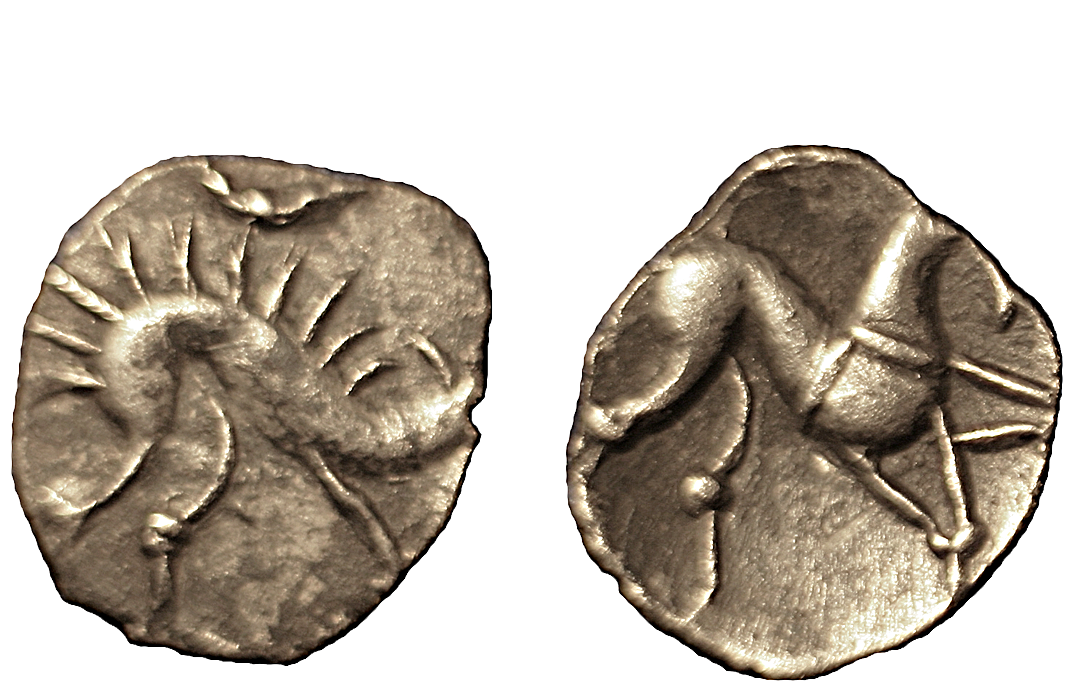
The coin above appeared during the summer of 2014. At arm’s length, it’s an impressive example of a Corieltauvian silver unit. On closer inspection, however, it proves to be a modern fake. The coin features a modified version of the boar – the forger was creating a new die variety to attract collectors.
An analysis of the die cutting suggests the coin is likely the work of the Haslemere Forger. If this is true, it represents an example of his best work. The fake cannot be traced earlier than 2014, but there’s no reason to believe it’s a recent production – it may have resided in a collection for more than fifteen years.
The coin’s well struck and shows no wear whatsoever. It hasn’t received the heavy chemical treatment the Forger normally used to obliterate his errors. It‘s received only mild treatment and some subsequent “antiquing”.
One stylistic error can be quickly pointed out. The neck of the boar should be tapering by the time it reaches the edge of the flan. Though the neck’s too thick at this point, this isn’t enough to condemn the piece.
At the time, I believed the coin was sufficiently questionable to reject it. But simply ignoring it wouldn’t serve the numismatic community very well. The fake was dangerous enough to demand further study and publication. Consequently, I obtained the coin to get at the facts.
Die cutting analysis
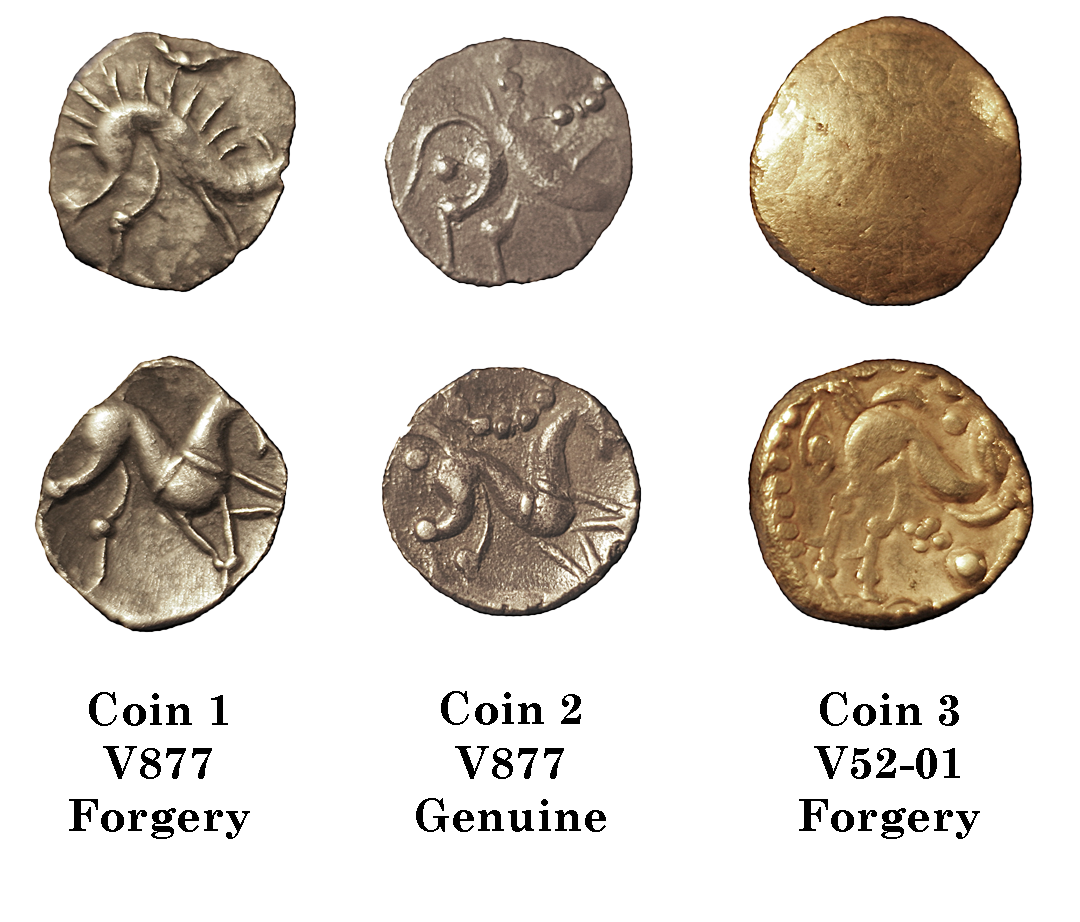
The plate above shows the fake and two coins used for comparison in the die cutting analysis.
The first coin, the fake, has uneven dark areas on its surface. These are the result of an antiquing treatment. They look strange because they’re not the result of natural oxidation. Without this blotchy look, the coin would appear to be an extremely good example of V877.
The die cutting errors are just visible using a 10x loupe. They were actually found using a stereomicroscope at 20 – 45x, which made it easy to spot them.
The second coin is a genuine example of V877, one that cannot be traced earlier than October 1984. It’s coated with a thin layer of a brown coloured substance, possibly varnish. Thus, it may come from an old collection, but there’s no way to prove this.
The genuine coin displays none of the die cutting errors commonly seen on fakes. It holds up to scrutiny even when viewed in stereo at 45x magnification.
At very low magnification (2x or 3x), the modern fake compares well with the genuine coin. In some ways, it’s a more attractive piece.
The third coin is a well-known Haslemere Forgery of a Gallo-Belgic E stater. This coin, already discussed in a previous article, is die linked to the Haslemere Hoard (info).
Die dressing error in the field
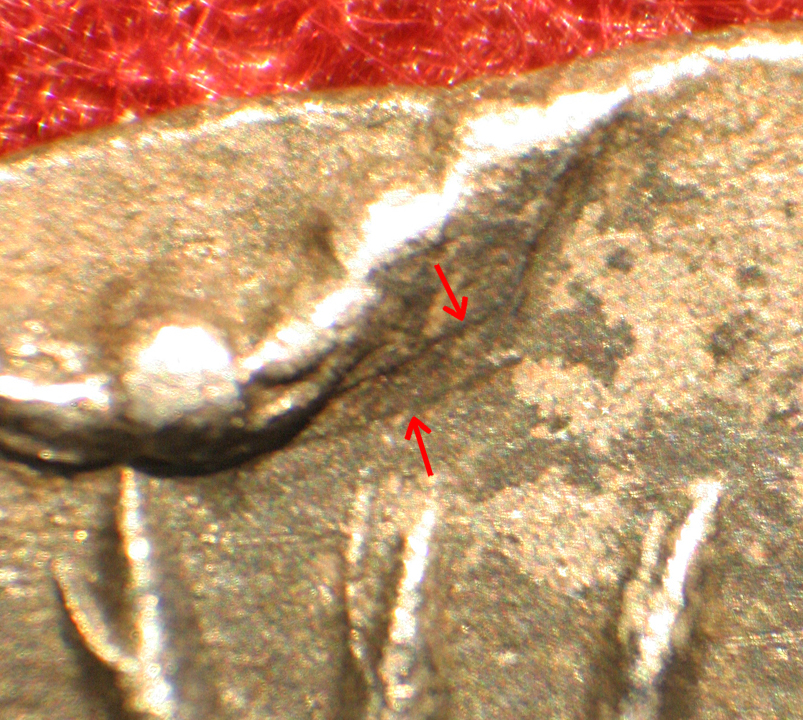
The forger used a chisel to adjust the obverse field. The purpose of the adjustment is puzzling – perhaps he was trying to smooth the surface. He’s chiseled a series of low steps in the field near the ring of pellets above the boar (arrows).
Genuine Celtic coins do not show this kind of sloppy work.
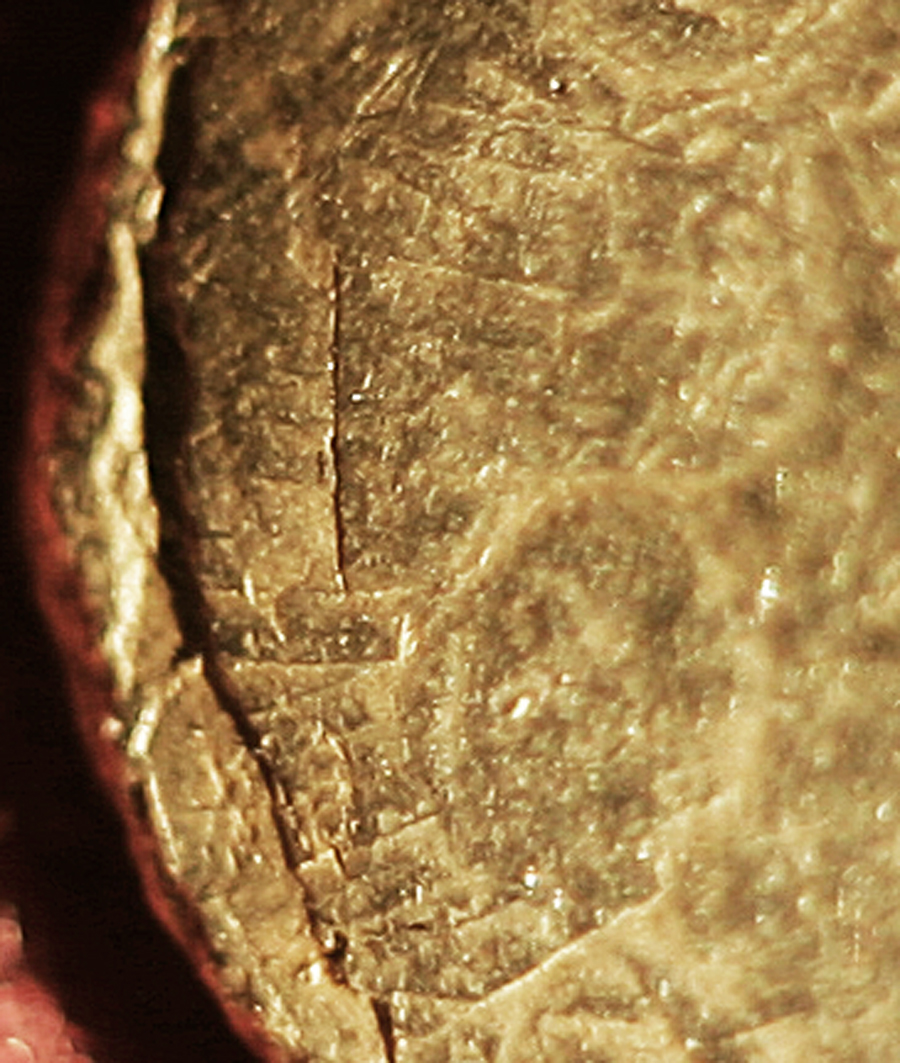
Coin 3, a known Haslemere Forgery, shows the same error. The forger used a chisel to smooth the field extensively on one side of the obverse (note the many lines).
Sloppy chisel work in the fields is one indication the Corieltauvian fake was made by the Haslemere Forger.
This diagnostic error has not been published previously.
Doubled rays above the boar
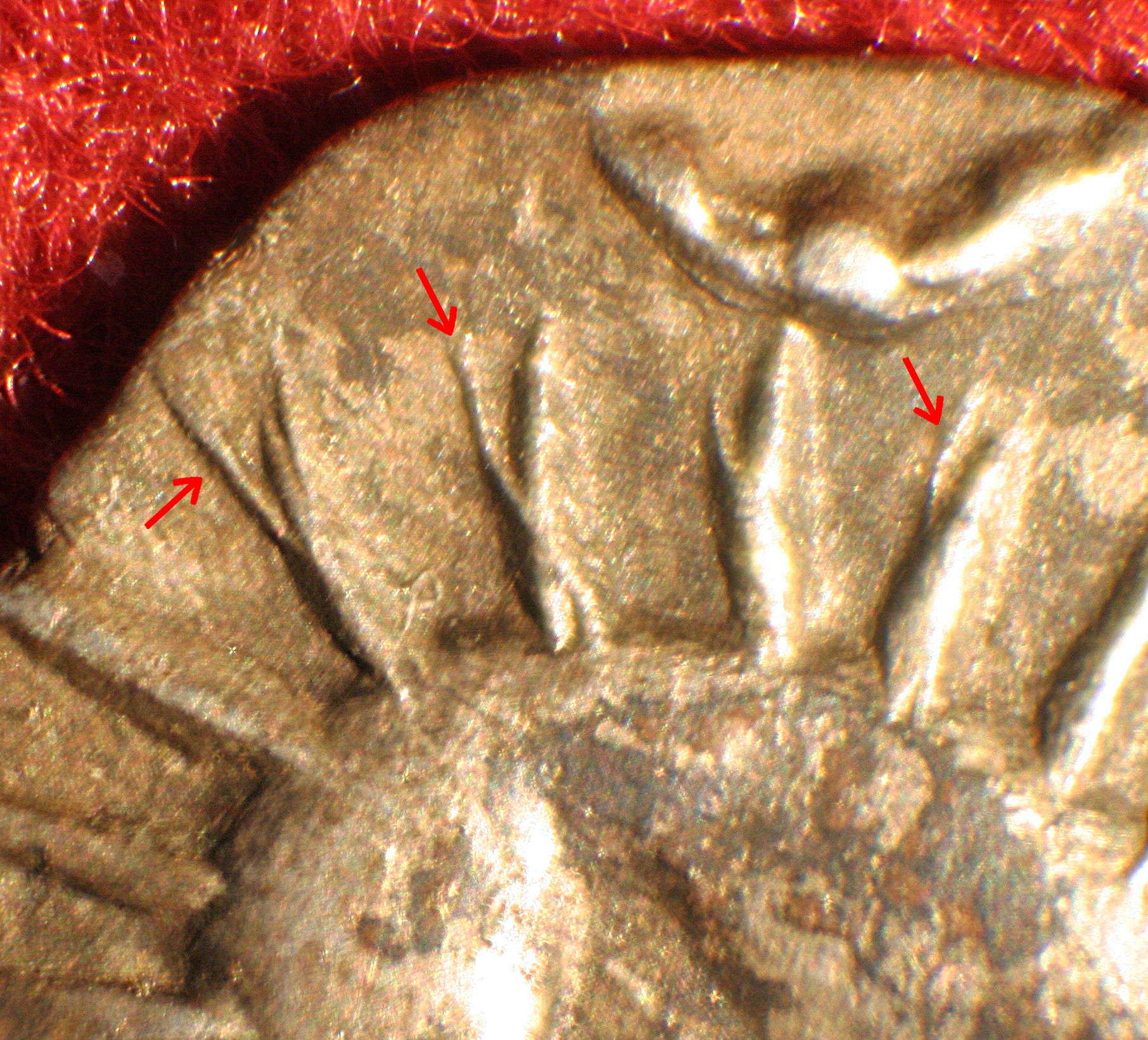
On the fake, several of the lines above the boar are doubled to produce little Xs, something not seen on normal V877 types (arrows). Though unusual, this is not enough to condemn the coin, by itself.
One coin recorded in the Celtic Coin Index in 1995 appears to show intentional splitting of the lines (info). This coin is not struck from the same dies as the fake nor is it die linked in any other way to the modern forgery. I have not seen the 1995 CCI coin and cannot make any further comments about it. Possibly the CCI coin provided the inspiration for the fake. If this is the case, it suggests a terminus post quem of 1995 for the forgery.
It’s important to note the forger exaggerated the “X” effect to make it very prominent.
Deeply cut lines on the obverse.
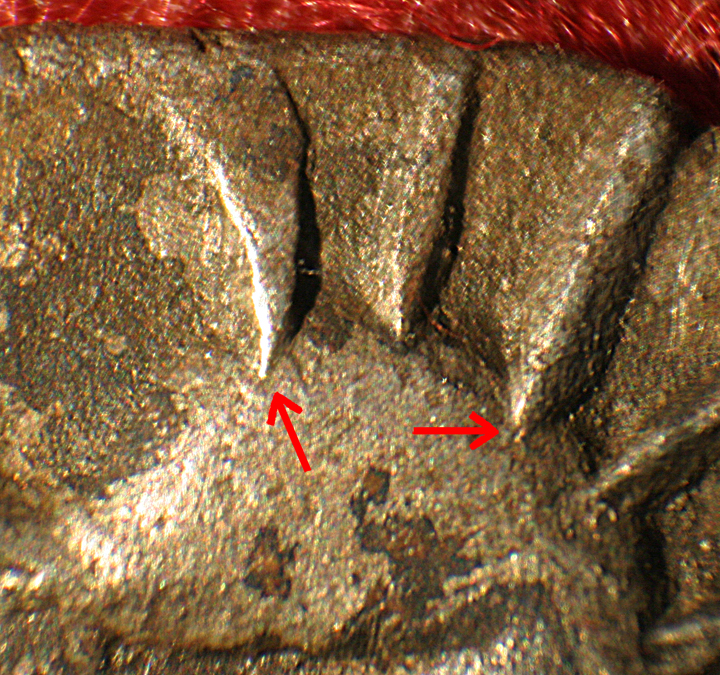
The forger cut the lines above the boar too deeply. They jab into the boar’s body and almost jump over the surface. This die cutting error has already been seen on a Haslemere Forgery of a Cheriton stater (info).
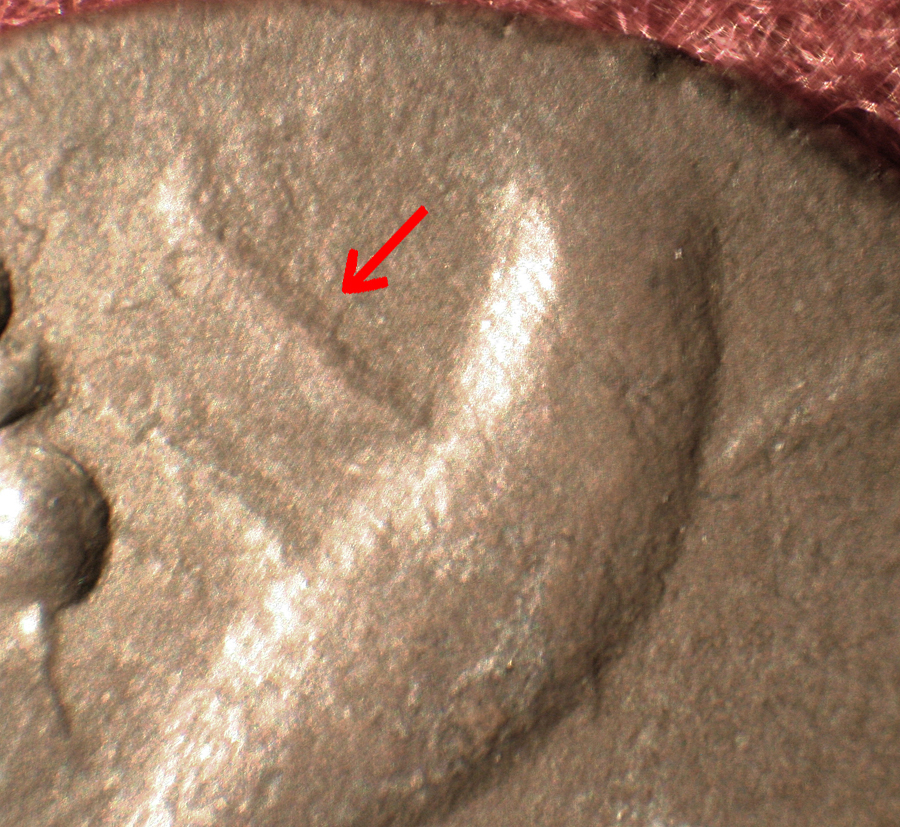
On the genuine Corieltauvian coin, the lines are not cut very deeply. They lie close to the field and meet the boar’s body without cutting into it.
Split End Error
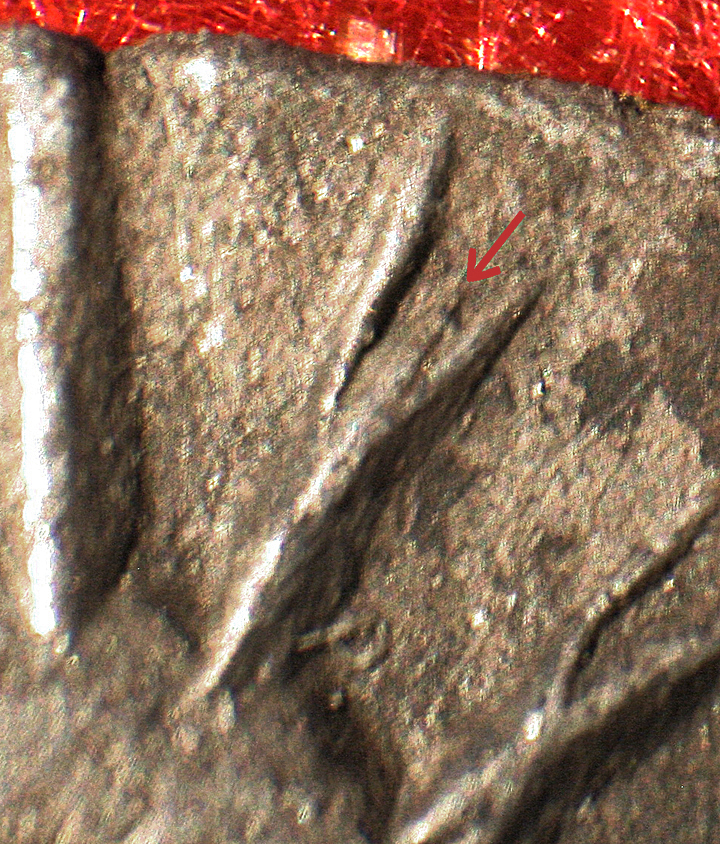
The fake displays a Split End Error on one of the lines above the boar (arrow). This is a common error of the Haslemere Forger (info).
Incompetently cut junction on the reverse
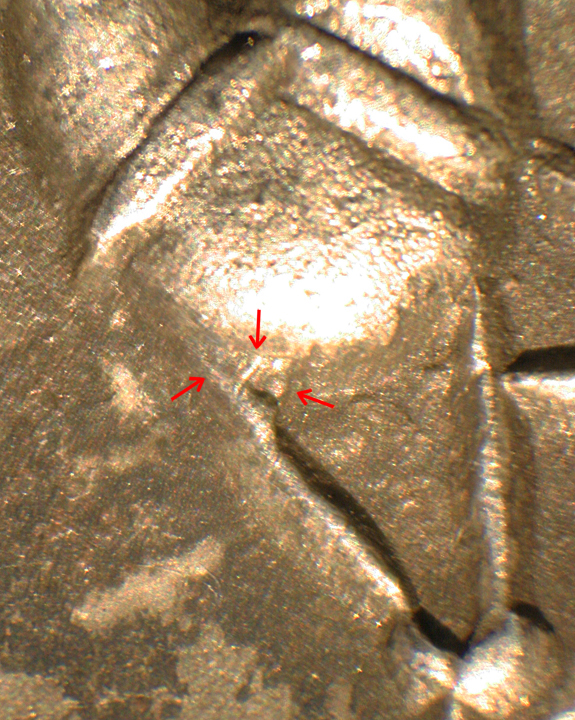
The forger slipped when he cut the horse’s leg where it approaches the animal’s body (arrows). The line is bent and a blob reveals an attempt to correct the mistake.
Further corrections resulted in a generally messy area in the angle between the leg and horse’s body. The forger tried to clean this messy area up, but only succeeded in making matters worse. A tiny line (top arrow) runs diagonally across the area, the result of one last attempt to fix the problem.
None of this can be explained away as normal die breakage, because the coin’s struck from fresh dies. The mess is simply the result of incompetent engraving work.
Possible Haslemere steps on the obverse
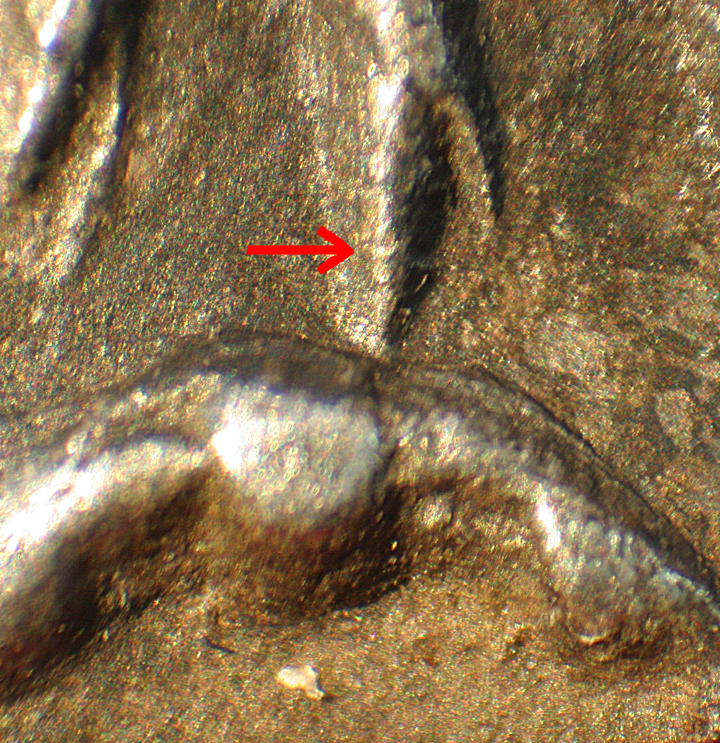
On one of the lines above the boar, possible Haslemere Steps can just be seen (arrow).
Die dressing errors on the reverse.
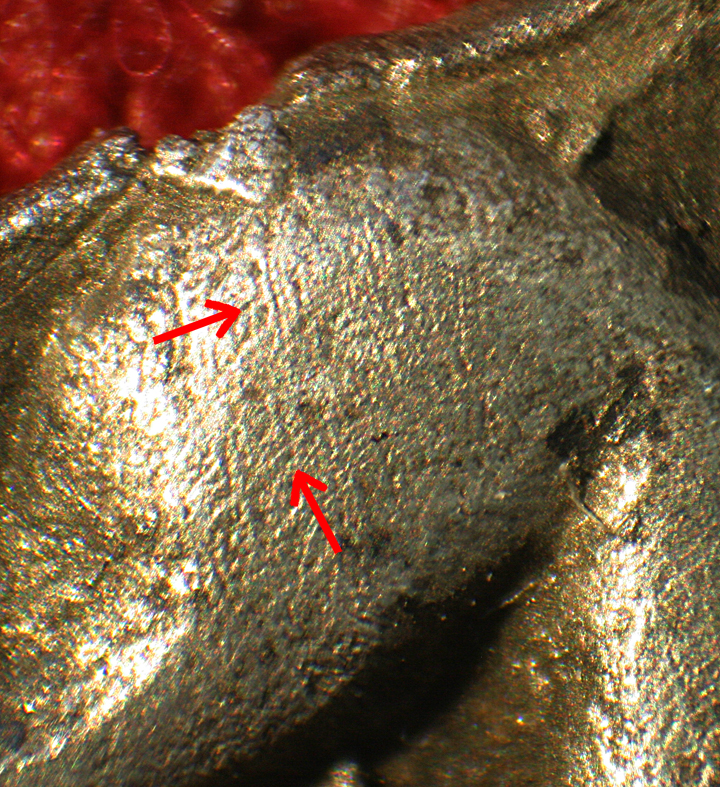
The forger smoothed the upper surface of the horse’s body with a series of crossed scrapes on the die. On the coin, these are seen as a series of raised lines crossing at roughly right angles. The fake shows no circulation wear whatsoever. If it had seen circulation, these faint lines would have been worn away.
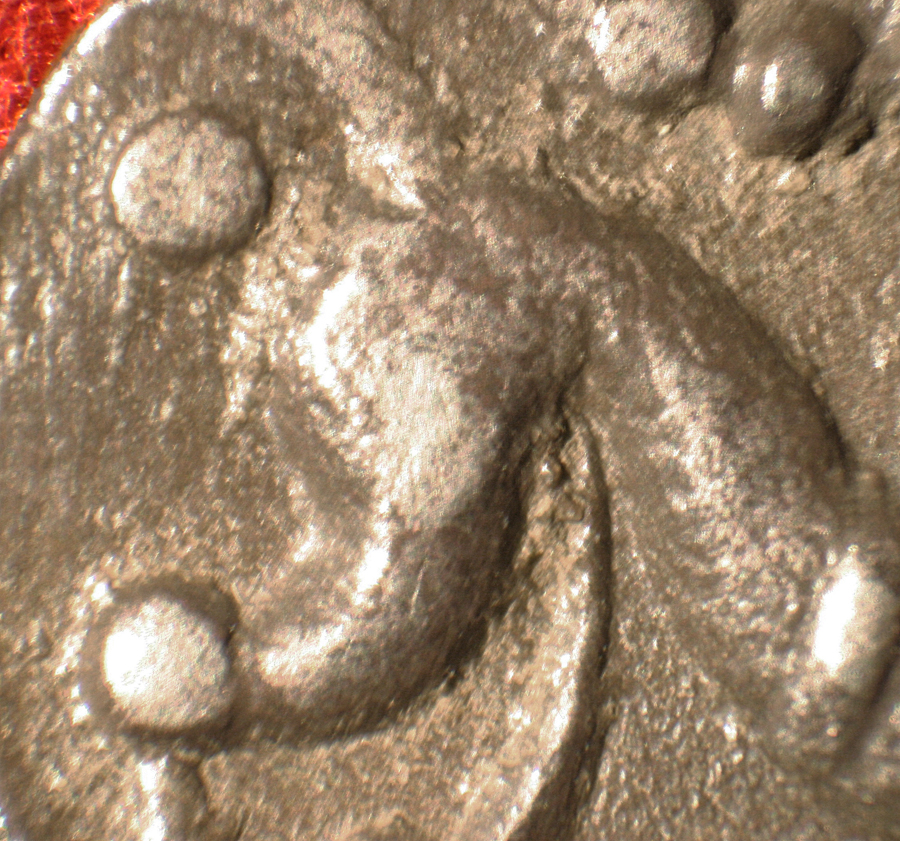
The upper surfaces of coin 2 (genuine) are completely smooth. They display no die dressing treatment whatsoever. This is typical of Celtic die cutting in general.
NB: the tiny blobs between the horse’s legs are tiny bits of quartz embedded in soil – the coin wasn’t cleaned thoroughly.
Possible Haslemere steps on the reverse
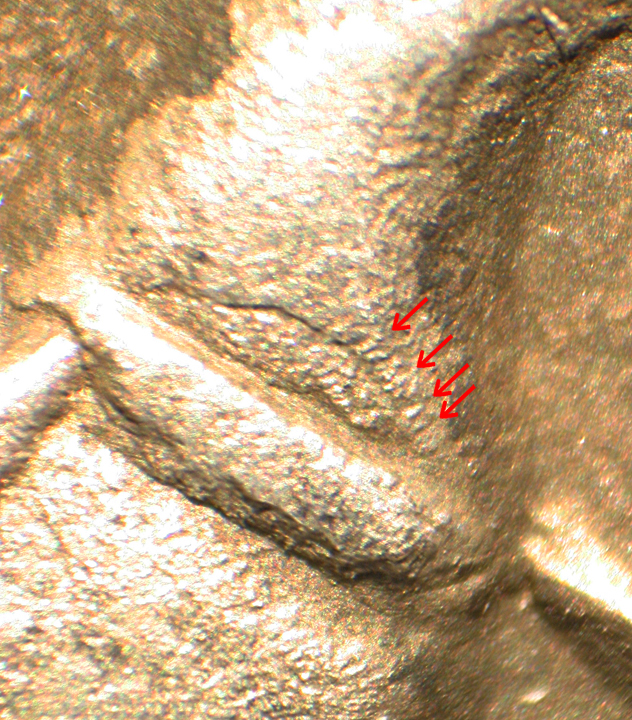
The fake has a strange raised area of decoration on the horse’s neck. This is not seen on genuine V877 coins. On one part of this decoration, possible Haslemere Steps appear (arrows).
Summary
- Late Haslemere forgeries can be condemned by detailed inspection. The best tool for this work is a stereomicroscope. At times, it may be helpful to run metallurgical or metallographic analyses.
- The authenticator builds a case by cataloguing diagnostic errors. One die cutting error may not be enough to condemn a coin. However, the forger usually produced numerous errors, and these taken together add up to a convincing case to reject a coin.
- The authentication techniques used in the 1980s are no longer good enough to spot the Haslemere Forger’s best work. By the mid-1990s, he had improved his work and was producing excellent fakes.
End
